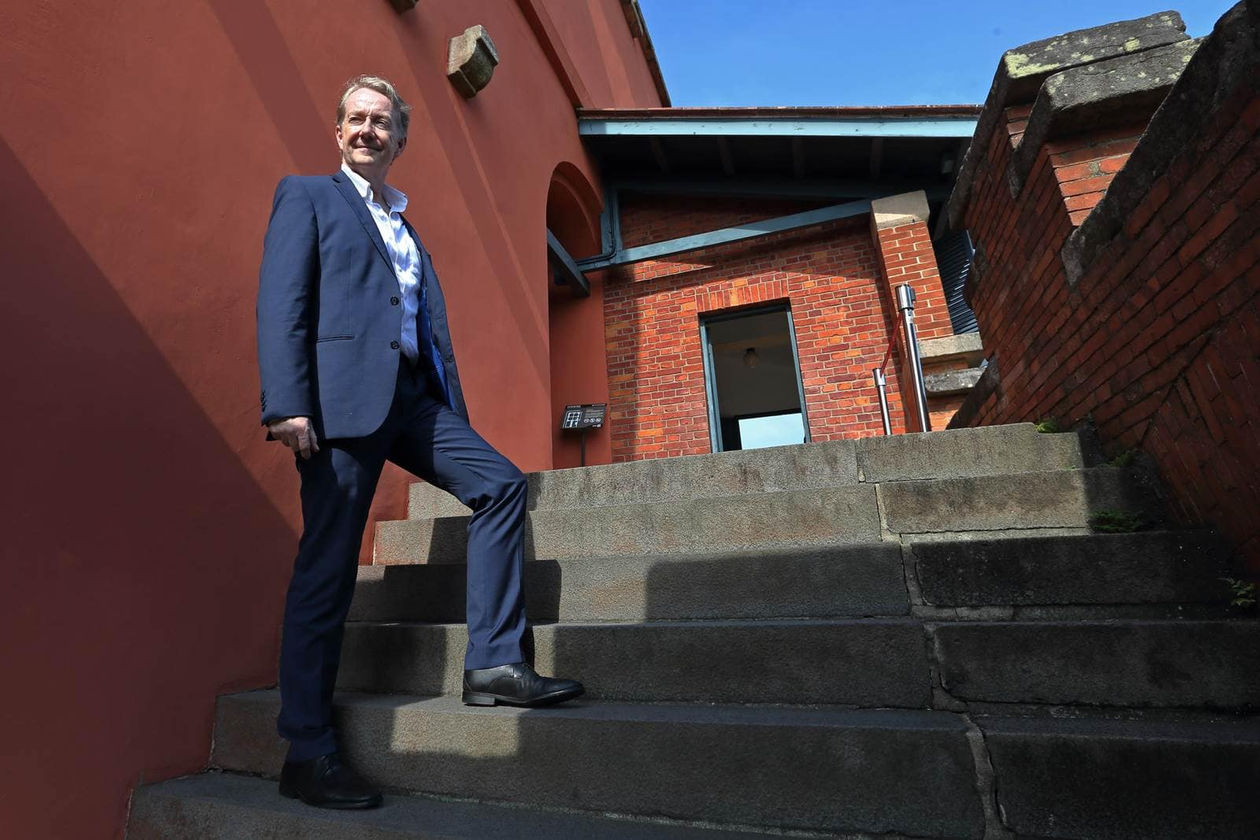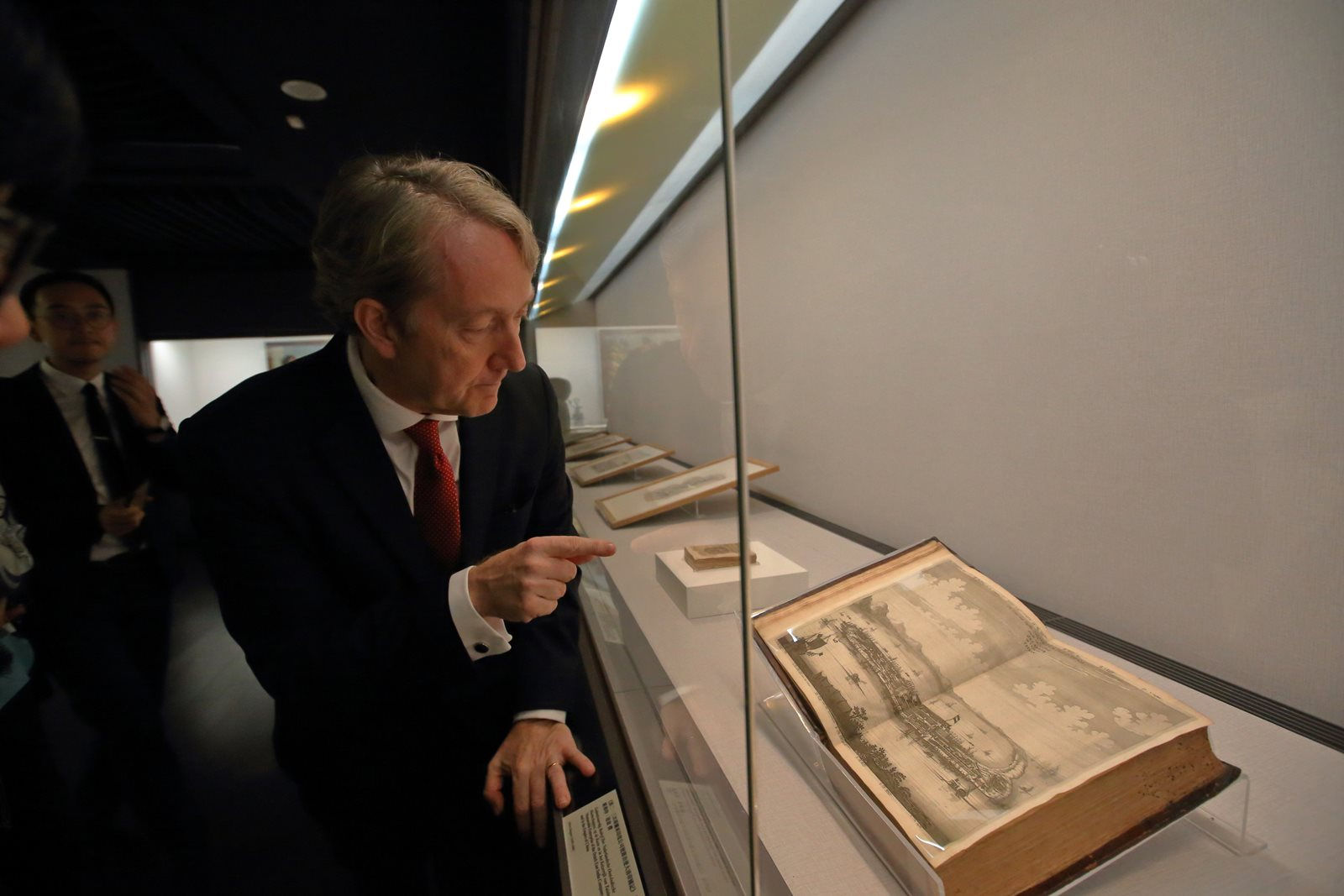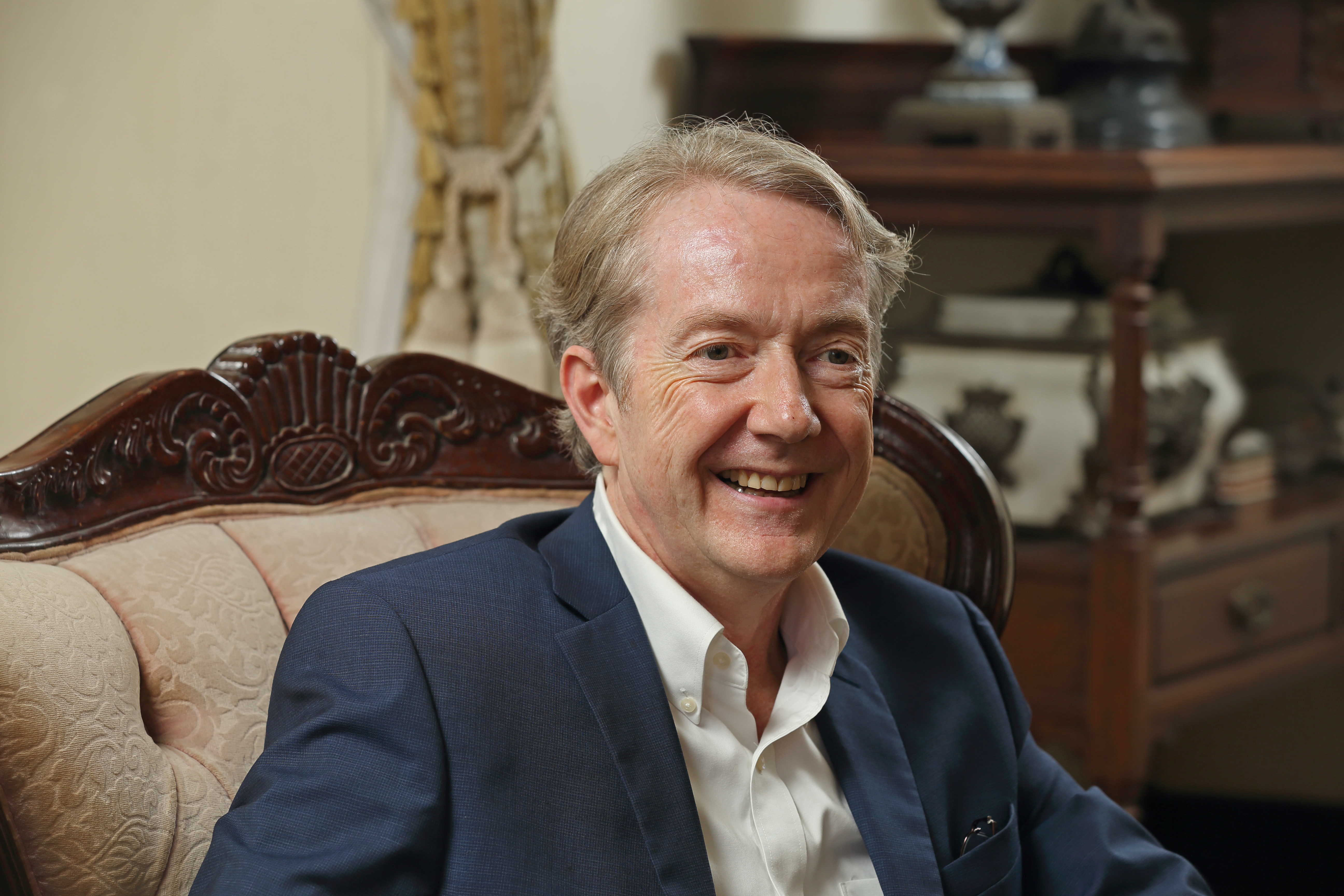Dutch representative Guy Wittich goes full circle with his Taiwan tenure

Source:Chien-Tong Wang
The Netherlands is Taiwan’s biggest foreign investor. In 2018, it has invested over NT$10 billion, most of which is in the semiconductor field. How important is the Netherlands for Taiwan’s semiconductor industry? What do the Dutch representative expect to see in terms of future collaboration between Taiwan and the Netherlands?
Views
Dutch representative Guy Wittich goes full circle with his Taiwan tenure
By Kwangyin LiuFrom CommonWealth Magazine (vol. 701 )
“We will start from the East Coast. The part between Hualien and Taitung is our favorite,” said Guy Wittich, his eyes sparkling. “The county road 193 is the most beautiful road in Taiwan; this is where we will take our bikes out,” he continued. “Passing through Yuli, Ruisui and Guangfu, we will arrive in Changbin and make a stop at an indigenous restaurant...”
Asked about his travel plans before departing Taiwan, the Dutch representative could not contain his excitement. This would not be his first time traveling around the island, as his first encounter with Taiwan was over 30 years ago, in 1984, when the Sinology freshman stayed in Taiwan for a month studying Chinese.

Wittich had probably spent more time in Taiwan than any of the Ducth traders in the 17th Century.
In 1646, after chasing out the Spaniards from northern Taiwan, the Dutch built Fort Antonio on the hill overlooking the Customs Wharf by the Tamsui River. This square fort was used as the office of the VOC traders.
However, merely 16 years later, in 1661, the Ming loyalist general Zheng Chenggong (Koxinga) defeated the Dutch and took over Fort Antonio. Since the Dutch were known for their red hair, the fort was then nicknamed "Fort Red Hair" (紅毛城) to this day.
While the Dutch domination of northern Taiwan was short-lived, Wittich has left some lasting legacy in Taiwan that will be remembered for a long time to come.
The two-floor Holland Pavilion at the 2018 Taichung Flora Expo was the world’s first “circular building.” Using wood provided by Taiwan Sugar Corporation, all equipment was rented and the components used for the construction are specially designed to be recycled or reused in future.

It is in line with Taiwan’s circular economy policy, inaugurated in 2016. This also marks the first time that a foreign representative office played a pivotal role in turning its country’s initiative into one of Taiwan’s key strategies. What’s more, this has not just monetary values but also positive environmental implications.
There was actually a fateful story behind his circular economy cause.
In 2015, on a flight from Amsterdam to Taipei, Wittich ran into Charles Huang, Founder of Taiwan Circular Economy Network and his long-time friend for over 30 years from the days of working as a KLM sales representative.
“I talked to him about Holland’s circular economy initiative, and it turned out I knew way more than he did,” Huang said. Three hours before landing, over breakfast, Huang walked Wittich through the concept and best practices of circular economy.
As soon as Wittich came to Taipei that summer to assume the position as Dutch representative, he called Huang and said “we need to do something together.” The next year they attended the Netherlands Circular Hotspot in Amsterdam, and Wittich became one of the board members of Huang’s foundation.
“Collaboration and sharing resources are part of circular economy principles,” said Huang. Their joint effort best exemplifies this spirit.
Before Wittich wraps up his Taiwan tenure in August, he shared his observations and hope for the future of Taiwan-Holland relations with CommonWealth Magazine:
CommonWealth Magazine: Over the past five years, what were some of the achievements that made you most proud?
Wittich: We have been really busy, time was never enough.
We have increased relations in many areas. The trade numbers doubled in the past few years. Especially in the field of science and technologies, such as the next generation of photonics and electronics.
Of course one of our highlights is circular economy. We try to share with Taiwan our experiences. It was made a policy by President Tsai in the year 2016. For the past five years we have tried to make it part of the thinking of industry and government that we need to go the direction of the circular economy and we tried to show how it’s done in practice. So we demonstrated it with the Holland Pavilion in the Flora Expo in Taichung. Taipei City Mayor 柯文哲 said he wanted to make Taipei City circular after the Netherlands. We try to influence the people and share our best practices. That’s what I am most proud of.
The circular economy initiative has really gone a long way. Charles Huang of Taiwan Circular Economy Network helped organize talks for me with the Ministry of Economic Affairs and all the other related ministries. In the beginning I always had to make introductions about its concept. Now these ministries have learned so quickly they could tell me even better. We are happy to see there are already great examples in the industry, like waterless dyeing with the textile industry. TSMC is also reusing its water at least five to six times.
I think the Netherlands is better known in Taiwan now, among business people, students or the common people. That was not the case five years ago. Before, when people heard the country Holland they only knew about Philips. Now they know that we are the champion of circular economy, tech innovation in photonics and offshore wind. We are like a spider that has nine webs, covering nine industries ranging from semiconductor, water management, cyber security to energy.
We have amplified our image. One way to tell is that with the newly added press function, our number of Facebook fans went from 3,000 to 30,000.
In terms of cultural exchange, there have been growing interests from the museums to do more. For example, the Rijksmuseum in Amsterdam and the National Palace Museum have already started talking about future collaborations. Since this April, the young people from Taiwan have also started applying for working holiday visas in the Netherlands. We are happy to see many young people are happy with cross fertilization of different cultures.

Q. What are some of the challenges the office has encountered?
A. More Dutch companies than ever are investing in Taiwan now, creating many business opportunities. In the field of offshore wind alone, there are 25 Dutch companies in Taiwan. There have also been Dutch architects such as MVRDV and Francine Houben working in Taiwan. In the process of construction there could be disagreement, and that’s where challenges could arise. Taiwan should try to make improvements in the government procurement area. Projects involving international parties should especially be transparent and predictable, so that all the stakeholders have a framework they can follow. Rules should remain coherent, not change along the way.
Another challenge is priority. There are so many things that Taiwan wants to collaborate with the Netherlands on. The challenge is for us to focus on the really important ones. It’s always hard to say yes to one and no to another. Time is of course an issue.
Q. The Netherlands is Taiwan’s biggest foreign investor. In 2018, it has invested over NT$10 billion, most of which is in the semiconductor field. How important is the Netherlands for Taiwan’s semiconductor industry?
A. The strategic partnership goes way back. When TSMC was founded in 1987 with researchers from ITRI, Philips was a major shareholder at 28%, but later sold off its shares in 2008 in line with its global strategy. ASML, the world leader in microchip lithography systems, was actually a spinoff from Philips. So ASML and TSMC are like cousins. TSMC is also the only company in the world that’s already using ASML’s most advanced EUV machines to produce chips. (note: in 2019, 45% of ASML sales are from the Taiwan market, with TSMC being its largest customer).
In addition to ASML, there are several other Dutch high-tech companies that supply TSMC, including BESI, ASM international, Xycarb Ceramics and Hitec Power Protection.
Dutch and Taiwanese companies in the semiconductor field work closely together to develop new technologies. Nowadays there is no industry that doesn’t use chips.
Even though Taiwan and the Netherlands are both tiny, we are playing such an important role in the world economy and technology. We need to continue to maximize our joined efforts.
Q. It was over 30 years ago that you first set foot in Taiwan. What are some of the most impressive changes you have witnessed here?
A. When I first came here in 1984, there was still Martial Law. Information was heavily restricted. As a Sinology student, I had to apply to visit the library of NCCU’s Institute of International Relations, in order to read books from China.
At first, Philips was about the only Dutch company here. After the 1980s, they arrived here one after another. And then the political system started to change. I was here when the first direct legislative election took place in 1992. I still remember the water cannons used to disperse the demonstrating crowds. Taiwan is now a vibrant democracy where people can say what they want, while embracing other people's opinions.
Last year, when I was back in the Netherlands, one of my colleagues congratulated me on Taiwan passing the marriage equality bill. It is just one more example that Taiwan is marked by its openness and tolerance. Over the last two decades, voluntarism has become so distinctive in Taiwan society, where a lot of people are taking care of stray dogs or participating in environmental organizations.
Some people might say that Taiwan is “too free.” The Netherlands actually shares very similar values. Dutch people love to argue with one another, but we have learned how to work together along the way. In the 17th century, we were threatened not only by the Spaniards but also floods. When the cities needed to reach a joint decision on how to tackle the floods, the decision making would take too long because all the stakeholders must be involved. But once a decision is made, we stick to it and see it to the end.
Q. What do you expect to see in terms of future collaboration between Taiwan and the Netherlands?
A. It would be the study of the history of Dutch East India Company (VOC)’s operations involving Taiwan. Either in Taiwan or the Netherlands, there is no research institute dedicated to the study of VOC. We need to explore the historical and cultural heritage together. Luckily there are researchers, for example Cheng Weichung (鄭維中) of Academia Sinica’s Institute of Taiwan History and some in Cheng Kung University. We really need more researchers in the Netherlands doing relevant research.
Hope we can have continuity in the programs we have been running in the past five years. Building from our success, we surely need to continue to invest in our friendship and collaborations.
Have you read?
♦ EU representative: Taiwan’s COVID-19 fighting experience is an inspiration for Europeans
♦ Taiwan is Now the Sole US Base for Mandarin Training, Former AIT Director Key Facilitator
♦ How a Competition in Taiwan Changed the Course of German Women’s Soccer







